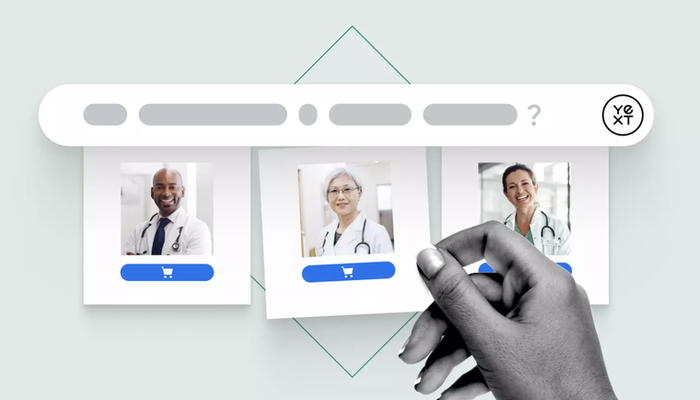More than 266 million Americans now shop online, indicating an increase of at least 30 million users since the onset of the pandemic. We've since observed the same trend in the healthcare space: it forced us to understand how crucial digital channels are to patients seeking care. But healthcare organizations aren't progressing as quickly as we might have thought to address this increase in patient activity and expectations.
Why? Well, it would be much easier to find the right provider to treat a unique condition if individuals could search anywhere online (via a search engine, a healthcare website, an app, etc.) and get the right information on the first try. The challenge is that healthcare organizations are selling providers, their specialties, and the provider time (appointment slots) — but no one team within an organization actually owns this information.
Outside of healthcare, other industries have faced very similar problems. For example, over the years:
- How did CVS know whether a certain product was in stock?
- How did Amazon know if a product was available for online purchase?
- How did Delta Airlines know that a plane was fully booked?
- How did Capital One know how much money was available in a single ATM?
All of these companies and industries have been forced to adopt sophisticated inventory systems to better answer users questions. As inventory tracking became more agile, precise and digitized, all of these organizations were able to gain a better understanding of product availability, which has ultimately led to a better customer experience. No longer would an organization disappoint a consumer because the company had no idea whether or not an item was available.
The growth and sophistication that took place within these other industries was all about tracking that inventory. In order to track the inventory, the organizations needed to know what they had available to sell. They also needed to understand whether the inventory was available (in real-time) to sell.
In healthcare, there are many parallels. What is a healthcare organization selling? Providers, what they specialize in, and their appointment availability. How does a healthcare organization know whether the provider is available? Well, that's a bigger question than we can answer in one blog post. But let's start here:
Verticals outside of healthcare had to overcome a lot of technical deficits to make converting a customer easier. The healthcare industry is now confronted with the exact same challenges – except the main difference between these other industries and healthcare is that those industries largely don't have "human inventory" with agency over their schedules. So, what can a healthcare organization do to start thinking about how closely related they are to other industries — and tracking available inventory?
Treat your doctors like you treat your inventory
To get started on thinking of "providers" as "inventory," there are two key steps.
The first step is to ensure you have a command over your healthcare inventory: your provider data. What does that look like?
- Provider name, address, phone number. Note: they may have multiple addresses and phone numbers because providers tend to work in multiple locations during a given week.
- Provider specialties – what is the provider board-specialized in, but also what is the provider a specialist in? For example, a provider might be a pediatric medical genetics specialist, but she may only focus on one or two genetic conditions. She probably wouldn't see someone for a simple pediatric problem (e.g., an ear infection).
- Where does this provider data live? Your provider data may live in multiple locations. Partial provider information will live in your credentialing platform, but that doesn't encompass the full amount of provider information you will need to manage your provider inventory. Other data could live in a CMS (because you are likely inputting data about your providers on your website). Maybe it lives on an Excel spreadsheet. It could also live in the EMR.
- How will you pull this provider data into a single place where your marketing team can access it? Will you need to set up an API between your systems? Does this single source allow for multiple relationships (e.g., one provider works in multiple locations). Can you specify a specialty, sub-subspecialty, conditions treated, and procedures performed by a provider? What is your process to manage provider data when providers enter or exit your health system, or move locations within the system? Are you working with a data governance committee to manage provider data? If not, do you need to stand up one? Where do you get provider data updates today (sometimes you can get them from practice managers, or providers directly – have you established where and how you will receive this information?). Can you encourage providers to update data on a quarterly basis in your provider data management platform?
Once you have a command over your provider data, you can take the second step to managing your provider inventory: appointment availability.
To start, it's important to understand that patients aren't just looking for a provider, they are looking for the opportunity to book an appointment with that provider. The more digital the consumer, the higher the expectation that the consumer will want to book that appointment online. Gaining visibility into appointment slots and availability, coupled with accurate insurance data, will be the key to mastering the concept of provider as inventory.
The faster you can gain command over your provider data, the easier it will be to build the foundation for meeting consumer expectations. The consumer has been trained by non-healthcare industries to expect exceptional digital experiences and to transact online. The key to succeeding in meeting those expectations in healthcare is to start with your provider data and treat that data like inventory.



